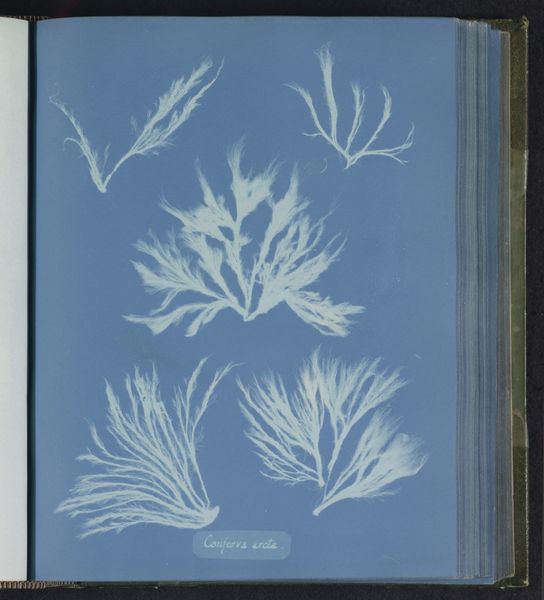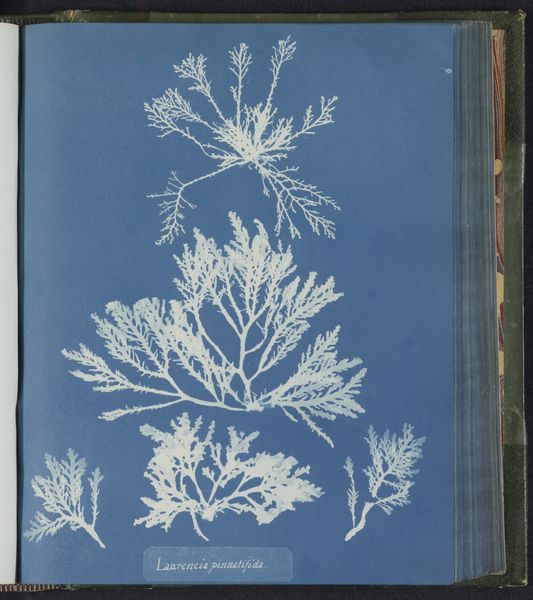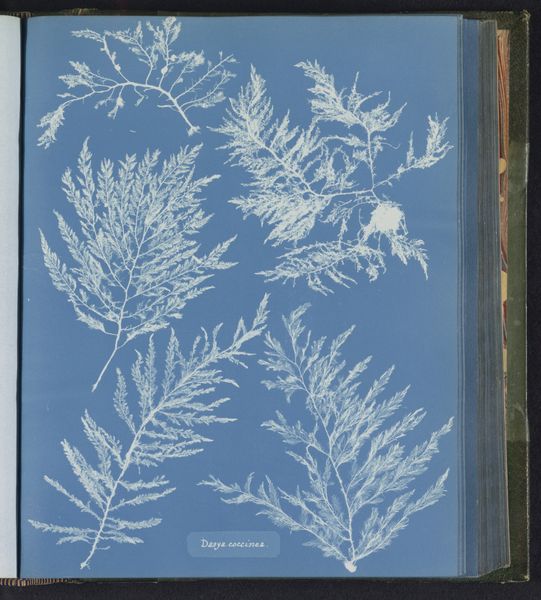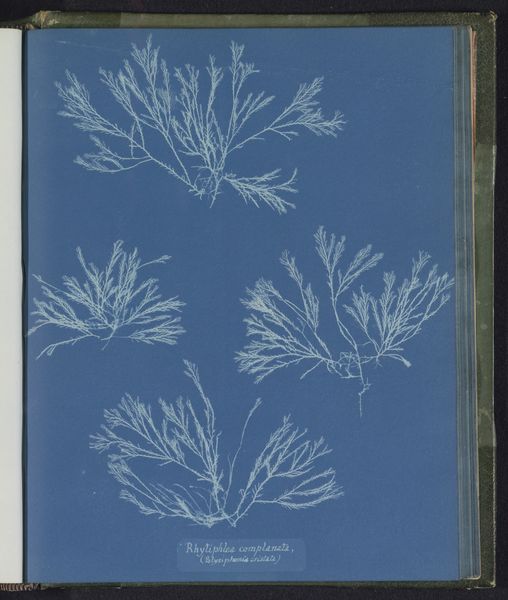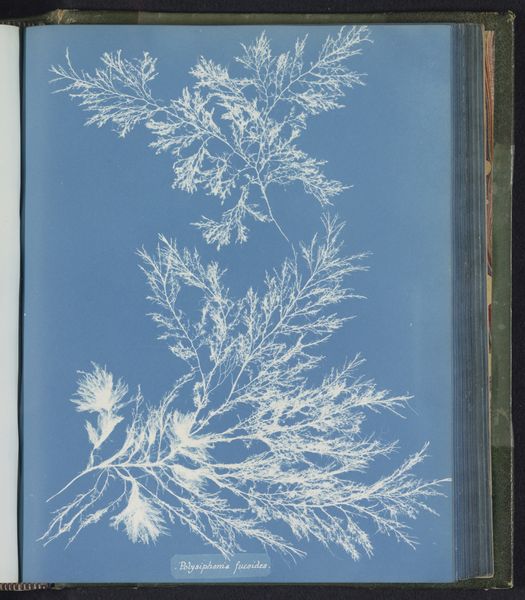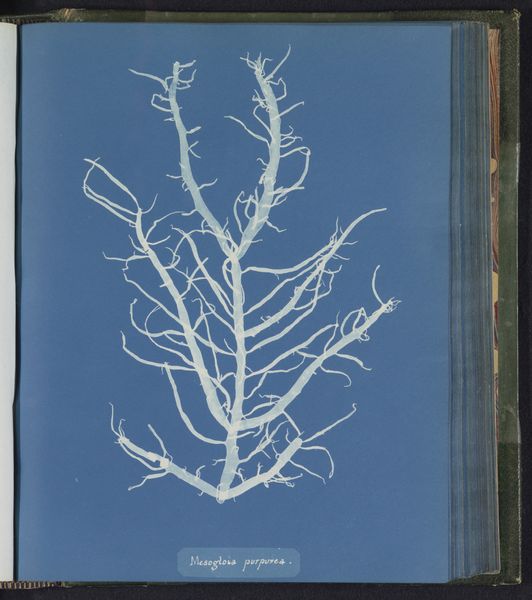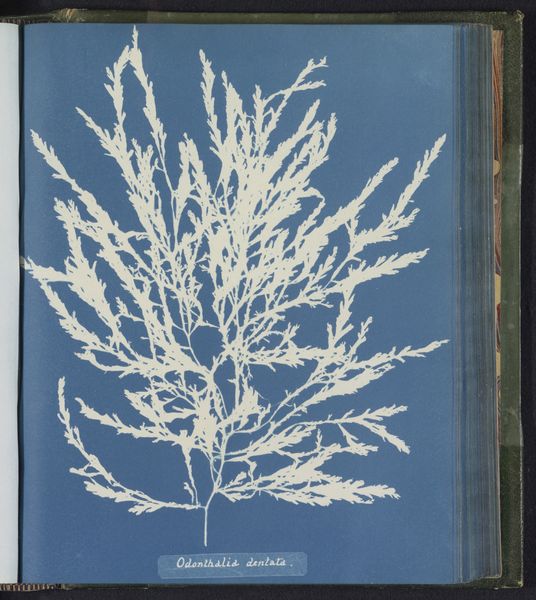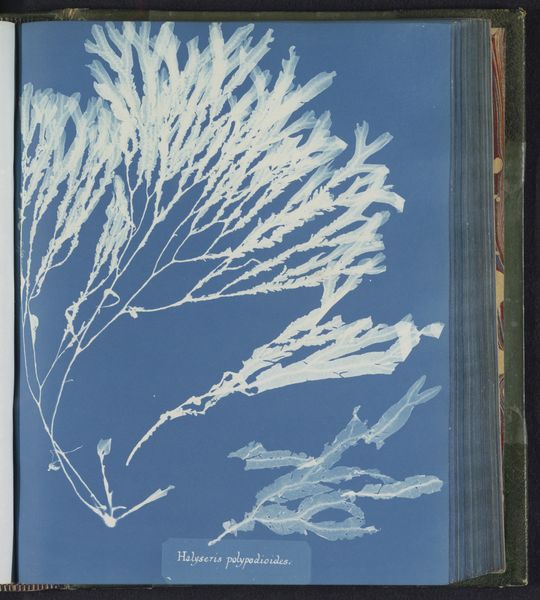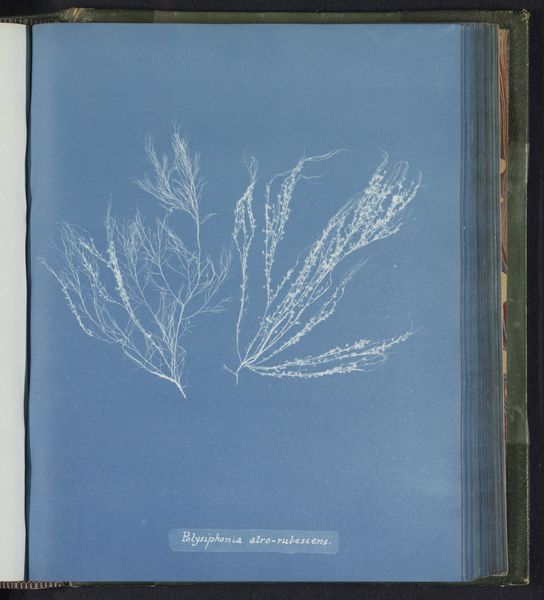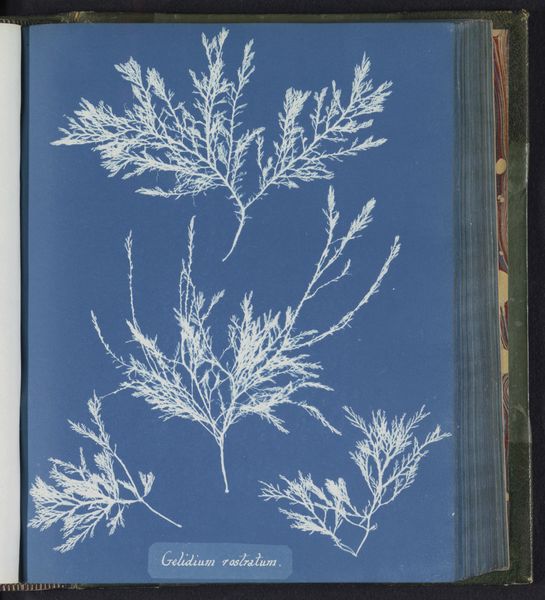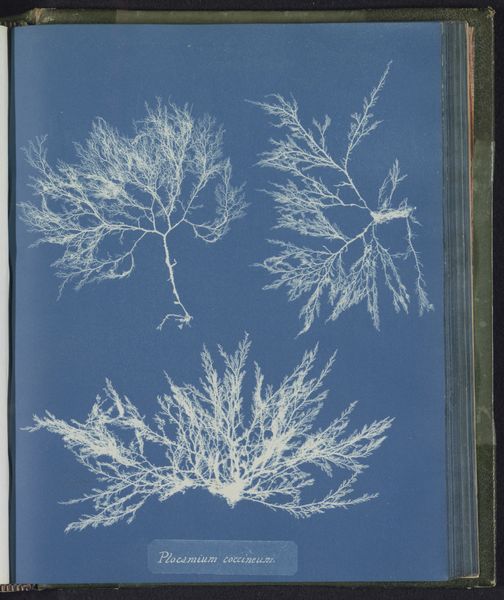![Rhodomenia polycarpa [= Rhodymenia polycarpa] by Anna Atkins](/_next/image?url=https%3A%2F%2Fd2w8kbdekdi1gv.cloudfront.net%2FeyJidWNrZXQiOiAiYXJ0ZXJhLWltYWdlcy1idWNrZXQiLCAia2V5IjogImFydHdvcmtzL2JkN2VkOTA2LTFmMTEtNGNmMy1hYzA1LTlmY2IzOWUyY2Y0Mi9iZDdlZDkwNi0xZjExLTRjZjMtYWMwNS05ZmNiMzllMmNmNDJfZnVsbC5qcGciLCAiZWRpdHMiOiB7InJlc2l6ZSI6IHsid2lkdGgiOiAxOTIwLCAiaGVpZ2h0IjogMTkyMCwgImZpdCI6ICJpbnNpZGUifX19&w=3840&q=75)
print, cyanotype, photography
# print
#
cyanotype
#
photography
#
handmade artwork painting
#
watercolour illustration
#
watercolor
Dimensions: height 250 mm, width 200 mm
Copyright: Rijks Museum: Open Domain
Curator: What a mesmerizing piece. Here we have Anna Atkins' cyanotype, "Rhodomenia polycarpa", created sometime between 1843 and 1853. It's a stunning example of early photographic botanical illustration. Editor: Immediately, I’m struck by the stark contrast of the ghostly white algae against that deep, almost melancholic blue. It evokes a feeling of being submerged, adrift in an unknown ocean. Curator: Indeed, the cyanotype process, using iron salts and sunlight, lends it that distinctive Prussian blue hue. Atkins used this innovative technique to meticulously document various species of algae, effectively creating a scientific catalogue presented as art. It challenged the traditional role of botanical illustration by employing photography. Editor: Right, this wasn't just about pretty pictures. In framing her project, Atkins bypassed the established visual and patriarchal modes of scientific cataloguing, intervening with new technologies and accessible methodologies. But did it challenge established hierarchies in reality, or remain contained as a mere gesture of democratization? Curator: The series itself was groundbreaking. Atkins was one of the first women to experiment with photography. The presentation as a collection also makes a clear statement, placing it firmly within scientific and educational circles. One has to ask how Atkins navigated the very male dominated science scene in 19th century Britain. Editor: Exactly! Considering the context, a woman deeply engaged with science in an era when that wasn't the norm for her gender, it certainly holds socio-political weight. This cyanotype pushes boundaries between art and science, access and exclusion. Curator: And while technically rigorous, the cyanotype process still introduces elements of chance and interpretation, blurring the line between objective record and artistic expression. Editor: The dreamlike aesthetic enhances that, doesn't it? It feels both precise and ethereal, grounded in scientific observation yet somehow removed from reality. Makes one reflect upon intersections of seeing, believing and understanding. Curator: I find it a wonderful testament to the power of interdisciplinary thinking and creative problem-solving. It bridges divides across multiple discourses, not just the arts. Editor: Absolutely, and it makes you consider the accessibility of knowledge – who gets to document, to name, to see. Curator: An elegant example of how art can expand and democratize ways of seeing. Editor: Precisely. I am leaving this image questioning both our relationship to knowledge, and our environment.
Comments
No comments
Be the first to comment and join the conversation on the ultimate creative platform.
